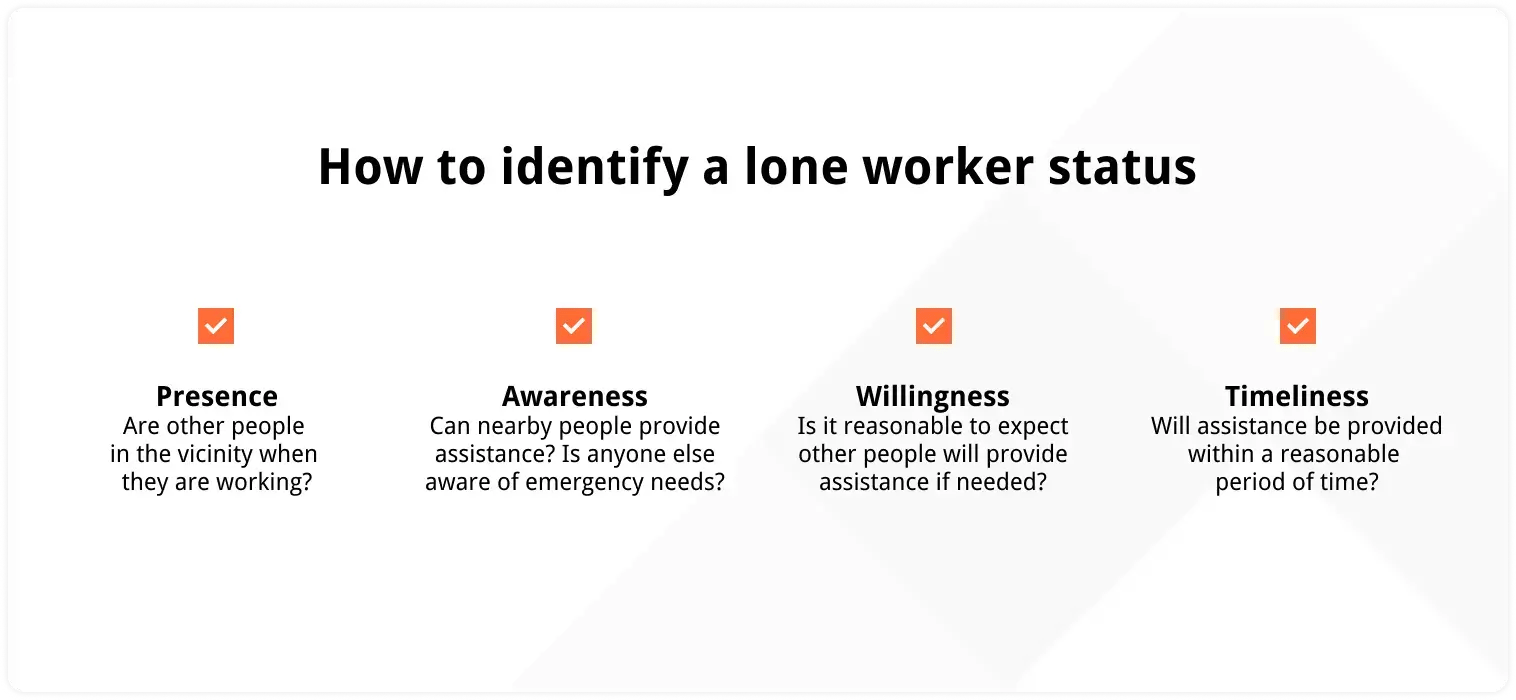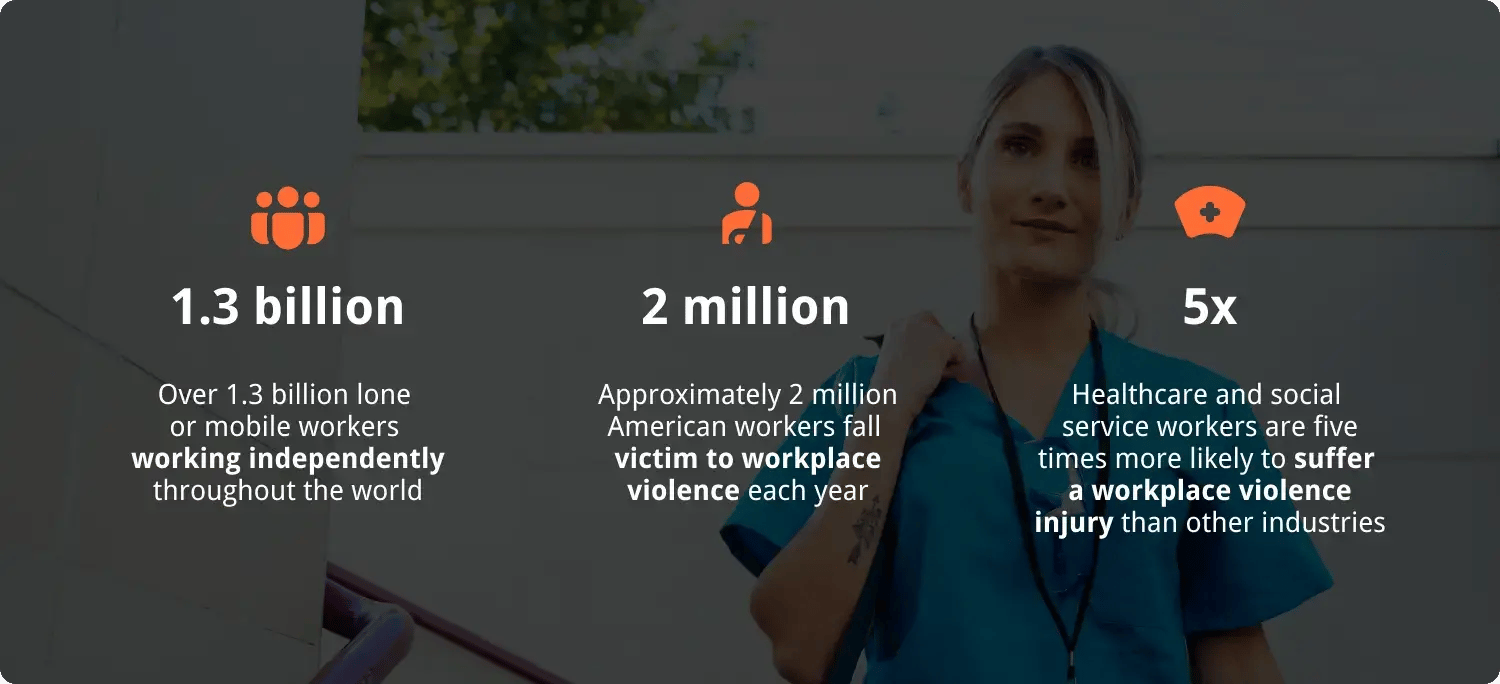Many employers may be putting their employees at risk without even knowing it. It’s not always easy for employers to identify which of their employees might be classified as “lone workers.” Yet employers have a moral and a legal obligation to keep all of their workers safe. Learn how to find out if an employee qualifies as a lone worker.
What defines a lone worker?
A lone worker is anyone who works alone without close supervision. The problem is sometimes employers and managers can overlook “lone worker” scenarios. For example, “road warriors” such as your traveling sales executives are lone workers. A cable technician is a lone worker, as is a realtor showing homes to prospective buyers. Yet how many employers have a lone worker safety plan for these workers? Without a plan, managers for lone worker safety are potentially putting their employees at risk as they work alone, and are also leaving their companies open to fines and other sanctions by the government.
Common examples of lone workers
As we previously mentioned, lone workers can be found in a wide range of industries and jobs. Here are some of the most typical roles that fall under this category:
- Field service technicians: Often traveling to various sites, they perform repairs and maintenance on equipment.
- Construction workers: Working on remote or large sites where they may not always have colleagues nearby.
- Utility workers: Inspecting and maintaining infrastructure like power lines, water mains, and gas lines, often in remote locations. Find out more about how Aware360’s safety solutions can help keep utility workers safe.
- Healthcare professionals: Providing home care or emergency medical services in patients' homes. Aware360’s lone worker solutions are vital for ensuring the safety of your healthcare workers.
- Security guards: Patrolling properties and monitoring surveillance systems solo, especially during off-hours.
How to identify a lone worker status?

Many employers may be putting their employees at risk by failing to develop and implement a lone worker safety solution. These employees are overlooked, often because as mentioned above they don’t conform to the traditional image of a lone worker. So, here are four questions that can help managers quickly determine which of their employees is working alone, and start the process of truly keeping them safe:
- Presence
Are other people in the vicinity when they are working?
- Awareness
Can nearby people provide assistance? Is anyone else aware of emergency needs?
- Willingness
Is it reasonable to expect other people will provide assistance if needed?
- Timeliness
Will assistance be provided within a reasonable period of time?
As a manager, if you cannot confidently answer "yes" to all of those questions, then your employee is working alone or in isolation.
What is another word for lone worker?
When talking about lone workers, several terms can be used interchangeably to describe individuals who perform their work-related duties far away from colleagues or personnel. Without an agreed terminology, it can get a little confusing. Here are some synonyms that are occasionally used when talking about lone workers:
- Isolated worker: Highlights the physical separation from others during work hours.
- Remote worker: Often used for those working in distant or less accessible locations.
- Independent worker: Focuses on the autonomy and self-reliance required in their role.
- Field worker: Refers to those who operate outside the traditional office setting, often in various locations.
- Unsupervised worker: Underlines the lack of direct supervision in their working environment.
- Mobile worker: Describes those who frequently move from one location to another, performing tasks alone.
These terms all convey the central concept of a lone worker—someone who carries out their job functions without close or direct interaction with colleagues.
Important facts about lone workers

Lone workers are a vital part of society, often carrying out roles and tasks that keep our water running and our power flowing. However, despite their importance, very few people are aware of these workers and the frequency with which they put themselves at risk. Here are some key facts about lone workers:
How many people are lone workers?
The International Data Corporation (IDC) estimates that there are over 1.3 billion lone or mobile workers working independently throughout the world, all found in a range of industries, from healthcare and social work to oil and gas and utilities.
How many lone workers are attacked during a year?
Far too many lone workers face attacks annually. According to OSHA, approximately 2 million American workers fall victim to workplace violence each year. This highlights the need for robust safety measures.
Which occupation has the highest rate of workplace violence?
Healthcare and social service workers are five times more likely to suffer a workplace violence injury than other industries. This includes nurses, social workers, and paramedics who often work alone in volatile environments.
What is the financial impact of poor lone-worker safety?

The main concern when it comes to lone worker safety should always be employee wellbeing. However, the financial aspect of injury and illness is often overlooked by organizations, and it can have a crippling impact on business.
How to keep lone workers safe?
Keeping your workers safe shouldn’t sound too difficult, but when they are traveling to and from remote locations, working with unknown dangers, and far from the nearest level of support, the challenge is considerable. Thankfully, technology provides the answer. Here are some effective strategies:
-
- Use lone worker monitoring solutions: Implement tools like AlertGPS to monitor the location and status of lone workers in real-time. This provides immediate alerts if a worker is in trouble, enabling a quick response.
- Equip with safety apps: These apps offer features that help monitor workers' locations and well-being to maintain communication and support. Here’s a closer look at how our very own SafetyAware is the answer.
How SafetyAware protects lone workers
About Aware360
Aware360 understands people are the most important part of a workplace and strive to provide the tools to ensure they will have help whenever it’s needed. Driven by our passion for people, Aware360 creates solutions to connect people with personal technology, to those who care and can help. This ensures people are safe, especially where they are exposed to social, environmental or health risks.
From workers in the most remote locations to delivery drivers in urban areas, we provide the technology and response network to ensure their safety anywhere in the world. That’s the power of our PeopleIoT™ solutions.